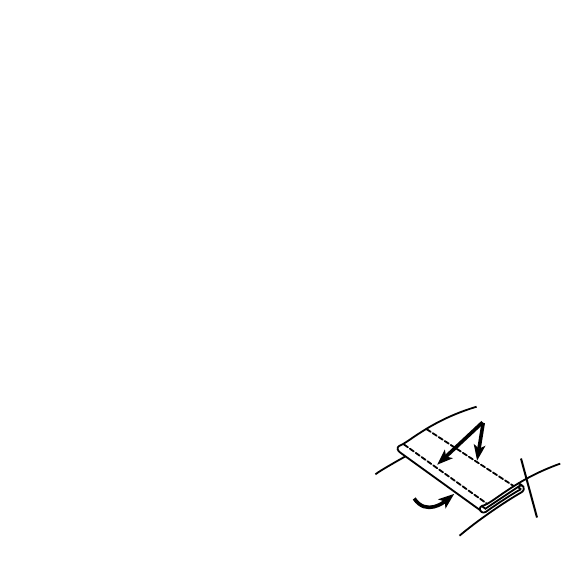
11 - Satellite
SeamSealingYourTent
If your tent will be subject to prolonged rainfall, all double-needle
seams on the tent body and the floor perimeter seams must be
sealed. Do not seam seal the zippers. Pitch the tent in a well
ventilated area (preferably out of doors and in the shade). Make
sure the tent is clean, dry, and taut. Stake out the tent floor.
Never seam seal in cold, damp (humid) environments. Seal the
coated (dull) side of the fabric whenever possible. On the
Satellite, the coated side is on the outside of the tent. Seam
sealer does not adhere as well to the uncoated side because the
water repellent finish is applied to that side. Apply several thin
coats instead of one thick coat. Work the seam sealer into the
seams and on top of the double-needle stitching by applying
pressure and brushing the liquid
back and forth. Seam seal all points
where webbing is sewn into or on a
seam. Work the sealer into and
around these attachment points
using the techniques described
above. The seam along the tent floor
perimeter where webbing is
attached should also receive extra attention. Follow the drying
instructions on the seam sealant tube carefully to prevent
damaging your tent.
CleaningYourTent
Never machine wash or machine dry your tent. For localized
cleaning, use a sponge with warm water. When cleaning the
entire tent, wash in a tub (bathtub) of cold water. Never use hot
water, bleach, dish-washing liquid, pre-soaking solutions, or spot
removers. If you use soap, always use a
non-detergent
soap. Dry
your tent by pitching it in the shade or by line drying only.
Never machine dry your tent.
StoringYourTent
Store your tent in a cool, dry environment. Pack the tent
loosely, and, if possible, leave the shock-corded poles completely
or partially assembled.
Seal over
stitching.
coated side
of fabric
Seal
under fold.


















